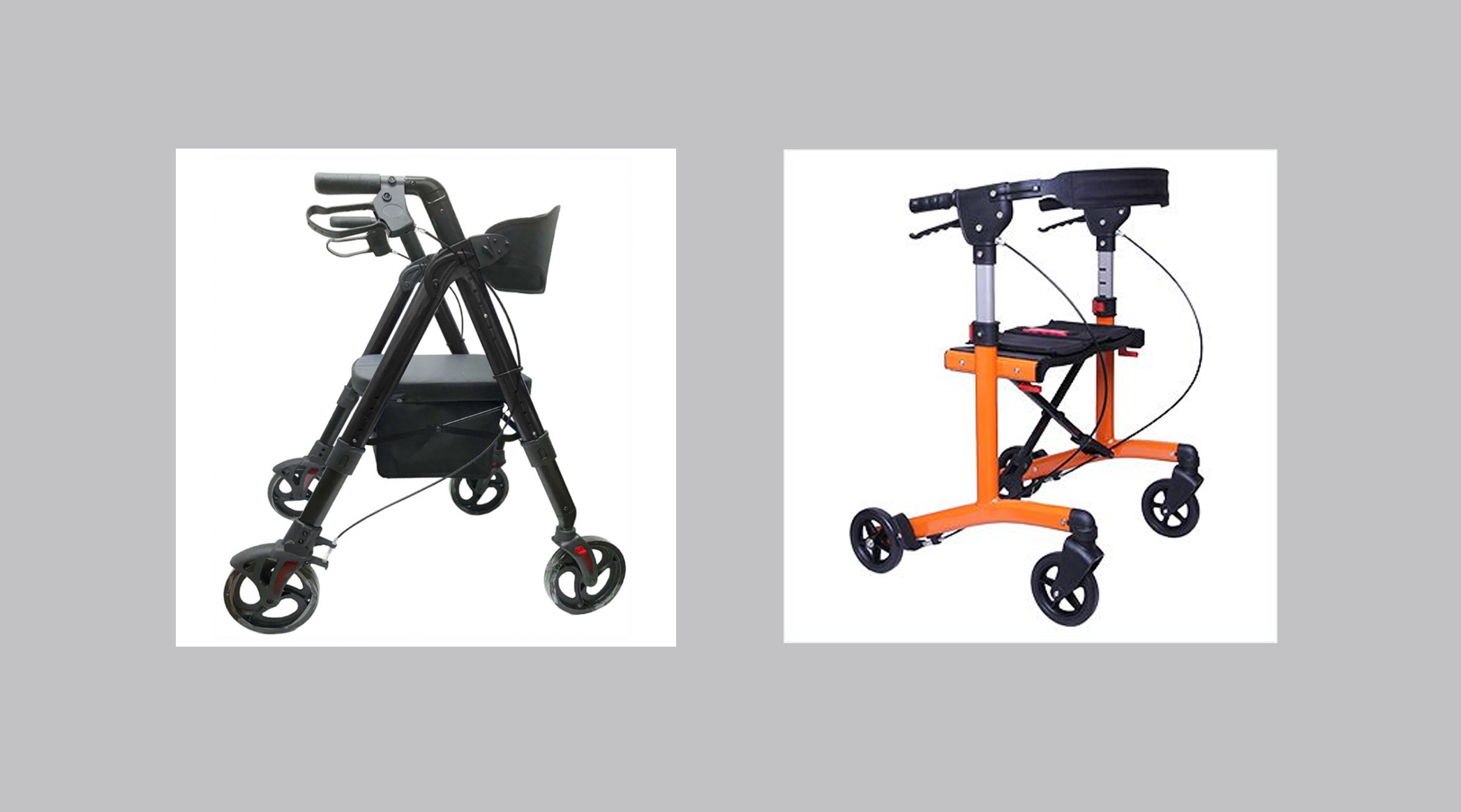Walker or Rollator- Unsure What to Choose?

Mobility walking aids can have multiple purposes – all very important to our physical, mental and physiological well-being. “Mobility is a sort of barometer for how well a person ages,” Dr. Cynthia J. Brown of the UAB Division of Gerontology, Geriatrics and Palliative Care reported in Science Digest. Mobility walking aids may be used as a part of a rehabilitation program (if someone is recovering from a minor accident or surgery for instance) or as a long-term aid. The key is to find the proper walking aid for you. There’s quite a few types of walking aids out there so know what your goals are before beginning your search.
The differences between Walkers and Rollators
A walker will have four non-skid, rubber tipped legs that you have to pick up to move. Some walkers will have two wheels in front to make use easier. These two wheels are historically in a locked-forward position but there are some models out today that allow for a locked position or a freely rotating system. A rollator is a more advanced type of walker that will have three or four wheels. Some rollators will have hand brakes, baskets, seats, and adjustable hand grips. We even have one that serves as both rollator and transport chair.
The walker is the first option when a cane is no longer useful. It does require moderate hand and arm strength. It can support up to 50 percent of the user’s body weight.
The rollator allows for a more natural gait and can be moved with less fatigue but does require a higher degree of stability and cognitive ability. A three-wheel rollator is going to provide optimum turning radius and is the lightest of the rollator series. Four-wheel rollators provide the most freedom and will usually have locking handbrakes, a seat, a back brace and basket.
The final type of walker/rollator is the knee walker. A lot of people just aren’t aware that there is an option to the archaic, uncomfortable, and odd fitting crutch. Knee walkers are a huge step forward for those recovering from foot or ankle surgery. And people love them!
Now that you know the difference between walkers and rollators, let’s take a look at which one is right for you.
A basic four-leg walker is generally a much better option when it comes to holding your weight if you have trouble with balance. This is because the walker’s legs touch the ground directly which makes it more stable. A solid grip and a steady balance are what you can expect from a walker. A walker is also lighter to transport. “Great walker, fits in the back seat of my car, easy to handle and I can take it everywhere. I love it and they come in many beautiful colors.” Affordable Medical Equipment customer Barb C. said.
Rollators aren’t going to offer as much support and stability as the walker but they do offer greater mobility. If your balance is good and you can stand straight, a rollator is right for you.
Allow Us to Help You
If you still have questions take a look at our walkers and rollators on our website. That will help. Regardless, come see us to get some of the best advice along with five-star customer service. We take great pride in providing solutions. Ashleigh N. recently said it best; “Amazing experience and I was lost about what type of equipment to get!” That happens a lot around here!



